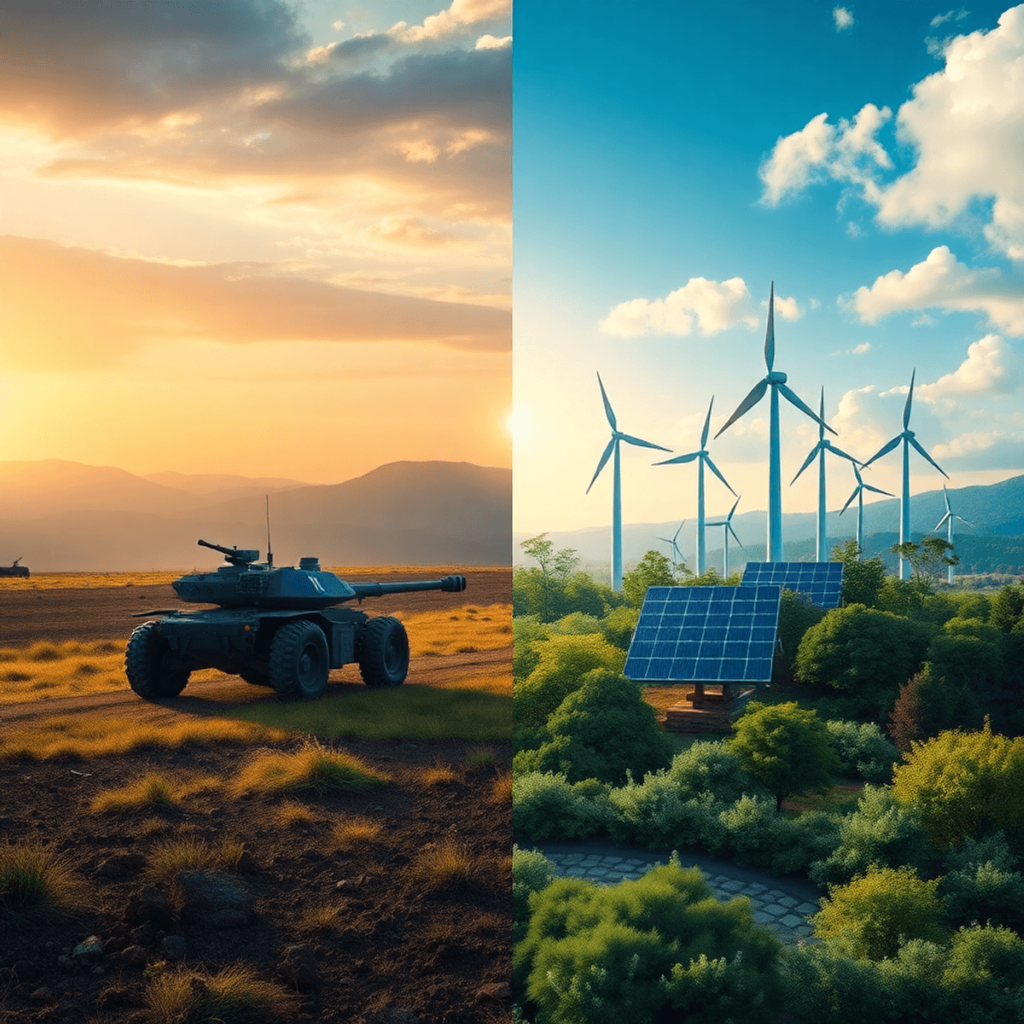
The Ukraine-Russia war – like many other conflicts around the world- has changed lives, politics and priorities across the globe. While the focus is understandably on helping people and managing this crisis of war, we still have another crisis that we need to deal with: the climate crisis. This war not only impacts the climate crisis in a negative way, it also provides an opportunity to learn from it in our fight for saving the earth.
This blog is about how the Russia-Ukrain war shows a surprising truth: when leaders feel something is urgent, they can suddenly find huge amounts of money. That means we can also find the money to fight climate change—if we decide it matters enough.
The War and the War Machine: A Climate Crisis
As the conflict intensifies, Europe—and many other countries around the world—are spending more and more of their budgets on defence. Advanced weaponry like jets, tanks, missiles and military infrastructure, ar ebeing paid for at an almost record speed. In fact, military spending across European countries is set to rise significantly as a direct result of this ongoing conflict. Read for more info the EU page. But what is this money actually funding?
But war doesn’t just cost money. It costs nature.
The weapon industry and military activities directly contribute to environmental destruction in multiple ways. From deforestation and habitat loss to massive carbon emissions, the very nature of war has devastating effects on our ecosystems.
Destruction of Natural Habitats
Modern warfare is extremely harmful to the environment. Forests and wetlands are destroyed by bombings and construction. Wildlife is pushed out. Water gets polluted. Soil is damaged for years. In Ukraine, many important natural areas—places full of life and resources—are being wiped out.
And that’s not all. The tools of war run on oil and fuel. Tanks, jets, and missiles produce huge amounts of carbon emissions, worsening the climate crisis. Even after war ends, rebuilding cities and infrastructure leads to even more pollution.
It’s a cycle where resources and money are drained—taken from what could be used for clean energy, sustainable farming, public transportation, and climate protection.All this makes it harder for ecosystems to recover. Read more in this article released by Conflict and Environment Observatory.
Carbon Footprint of War
War, at its core, is carbon-intensive. The weapons and machinery used on the battlefield are major contributors to greenhouse gas emissions. The latest estimate is that global war accounts for approximately 5.5% of the world’s total greenhouse gas emission, as estimated by international experts in 2022 (CEOBS, 2023) Tanks, fighter jets, artillery, and missiles all consume vast amounts of fuel, releasing a significant amount of carbon dioxide into the atmosphere. The climate crisis is exacerbated by these emissions, but the effects don’t stop there. Once this war will is over, we will further increase CO2 footprint due to large industrial activities involved in rebuilding destroyed infrastructure, villages etc.
Moreover, the massive spending on defence industries, creates a cycle of continuous consumption of resources. This means that precious resources that could otherwise go towards protecting the earth, e.g. building sustainable energy solutions, green technologies, or funding environmental protection initiatives are now depleted for weaponry.
Shifting Priorities: War vs. Sustainability
Before the war, many governments claimed that they “couldn’t afford” large-scale investments on the climate crisis and protecting nature. Budgets were tight such as in the Netherlands. Climate targets felt far away and not invested in (Reuters, 2023).
But suddenly, in the face of war, billions appeared.
This tells us something powerful: it’s not about whether the money exists. It’s about what we choose to spend it on. Nations are suddenly able to mobilize vast sums of money for war efforts, yet continue to neglect the environmental and climate crises that have been building for decades.
What if we chose the future instead of fear? What if we directed even a fraction of that military spending toward renewable energy, clean air, healthy food systems, and restoring nature?
Imagine a world where our biggest investments protect people and the planet, not just borders.

The Choice We Face: War or a Sustainable Future?
The Ukraine-Russia war has served as a wake-up call for many nations about the fragility of peace. It showed us how quickly the world can change. It also showed us how much can be done and invested when leaders feel the urgency. That same feeling of urgency is needed to fight climate change and to keep nature intact.
The war has made one thing clear—when the political will is there, funding can be found.
Therefore, the Russia-Ukrain war has made it very clear that governments can find fundings. They only need to feel the urge to do so as well for the climate crisis. So, let’s tell our governments that the climate crisis is also a fight for survival – just like a war. But this is one we can win if we act together.
It’s now proven that we can find the funding. Now we just need to find the will.
For remarks, please contact letstalk2@keepanearth.com
References:

